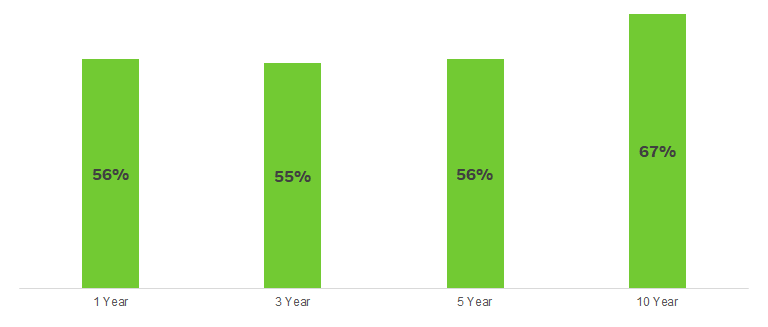Another way to access the size premium involves equally weighting companies in a broad-based index. Many of the most well-known indexes, such as the S&P 500, weight companies based on the size of their market cap. Larger companies like Apple, Tesla, and Amazon have larger weights than smaller firms in the index.2 One way to create a size portfolio is to weight each company in a broad-based index equally. An ETF that tracks an equally weighted index such as the iShares MSCI USA Equal Weighted ETF (EUSA) will have more exposure to mid-cap companies than the broad index. This version of size investing allows the investor to gain exposure to the broad market, it invests in all parent universe securities, with different weights based on market-cap. Historically, this has tended to track a bit closer to the broad market compared to a pure size or multifactor approach.
A third option to investing in the size premium is investing in small cap securities that also have positive characteristics to other known style factors. One way to implement this strategy is through a small cap multifactor ETF, such as the iShares US Small Cap Equity Factor ETF (SMLF). This approach attempts to enhance small cap returns by emphasizing other characteristics like companies that have higher quality earnings or trade at a relative discount (value). By starting with a small cap benchmark, the investor can gain exposure to the size factor while also adding exposure to other historically rewarded factors all while controlling for risk relative to small cap benchmarks.


